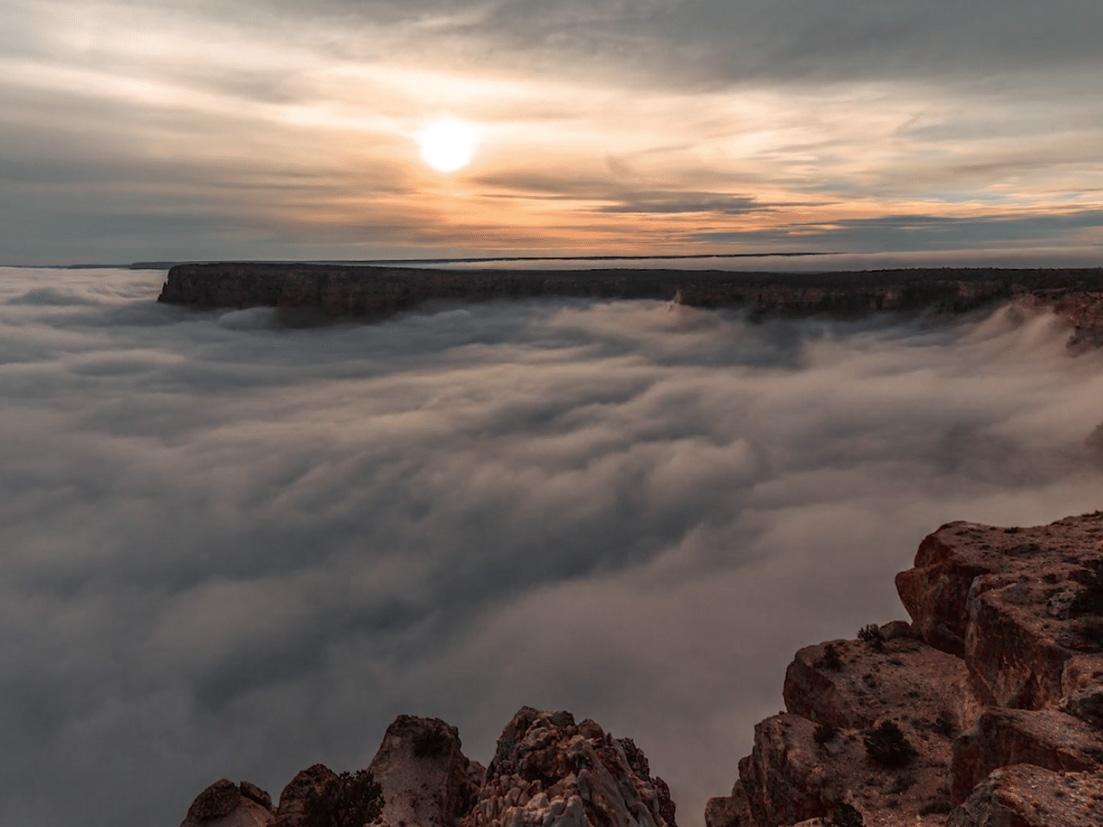Photograph captures rare phenomenon of clouds rolling inside Grand Canyon
Image shows atmosphere 'flipping over' within geological basin

Your support helps us to tell the story
From reproductive rights to climate change to Big Tech, The Independent is on the ground when the story is developing. Whether it's investigating the financials of Elon Musk's pro-Trump PAC or producing our latest documentary, 'The A Word', which shines a light on the American women fighting for reproductive rights, we know how important it is to parse out the facts from the messaging.
At such a critical moment in US history, we need reporters on the ground. Your donation allows us to keep sending journalists to speak to both sides of the story.
The Independent is trusted by Americans across the entire political spectrum. And unlike many other quality news outlets, we choose not to lock Americans out of our reporting and analysis with paywalls. We believe quality journalism should be available to everyone, paid for by those who can afford it.
Your support makes all the difference.A sea of clouds lap at the shore. Waves roil and dissipate while the tide comes in and then flows out. This isn’t an ocean, though. It’s the Grand Canyon in very rare form.
On an average day — the vast majority of days, actually — air temperature gets cooler as you go higher in the atmosphere. Put very simply, the ground is warm and the sky is not.
That’s why clouds form in the sky. If moist air rises up from ground-level, it cools in the sky and the moisture condenses into clouds, much like the condensation on a cold glass of lemonade during a hot summer afternoon. Water vapour in the air condenses on the glass.
In rare circumstances, the opposite happens — cold air is at the ground and warm air is above it. The atmosphere flips over and all of a sudden the clouds are at your feet.
This is what’s happening in the video of the Grand Canyon above, which Skyglow Project shared earlier this week. The temperature inside the Grand Canyon cooled rapidly during the night. Any humidity that was in the air condensed into clouds. Given how dry the Grand Canyon usually is, these incredible events happen only after rain.
The phenomenon is called a total temperature inversion. A cold layer of air is trapped at the base of the canyon and is capped by a warm layer of air.
The Department of Interior says fog filling the Grand Canyon is relatively rare, happening only once every several years.
Copyright The Washington Post
Join our commenting forum
Join thought-provoking conversations, follow other Independent readers and see their replies
Comments